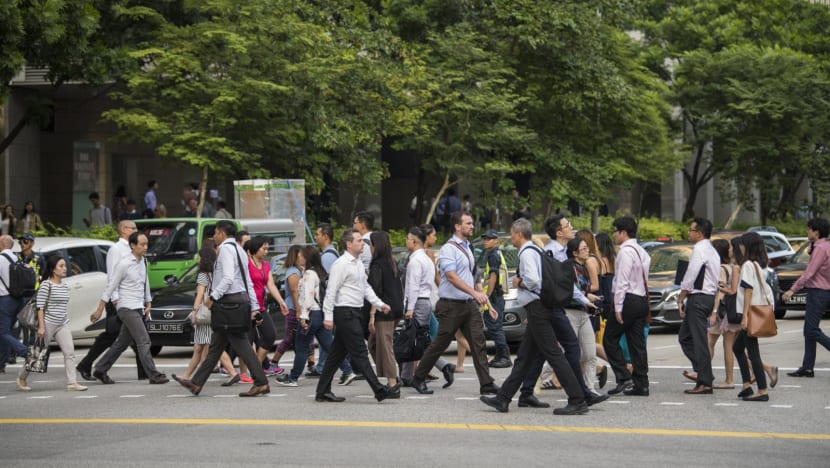Total employment growth in Singapore doubled in Q2: Advance estimates

Office workers walking on the streets of the Central Business District. (File photo: iStock/3yephotography)

This audio is generated by an AI tool.
SINGAPORE: Total employment growth in the second quarter of the year was more than double that of the previous quarter, according to advance labour market estimates released by the Manpower Ministry (MOM) on Wednesday (Jul 31).
Total employment, excluding migrant domestic workers, grew by 11,300 in the second quarter of 2024, more than double the growth of 4,700 in the first quarter.
Resident employment continued to rise in growth sectors such as financial services, health and social services, information and communications and professional services, indicating positive employment prospects for resident workers, said MOM.
However, overall resident employment saw a slight decline in the second quarter of 2024 due to a seasonal contraction in retail trade. Employers temporarily hire more workers in the fourth quarter of each year for year-end festivities.
Non-resident employment increased and accounted for all the employment growth in the second quarter, after declining in the first quarter of the year.
The increase in non-resident employment in the second quarter was attributed to work permit holders working in non-PMET roles in construction and manufacturing, said MOM.
"These are jobs which residents do not typically take on.
“While employment among both EP and S Pass holders declined in Q2 2024, work pass applications for higher-skilled non-residents have risen,” the ministry added.
For the first half of 2024, employment grew for both residents and non-residents.
Unemployment rates also declined in June compared with the month before.
The overall unemployment rate declined slightly from 2.1 per cent in May to 2 per cent in June. The resident rate dropped from 2.9 per cent to 2.7 per cent, while the citizen rate fell from 3 per cent to 2.8 per cent.
The number of retrenchments held steady in the second quarter – 3,100 compared with 3,030 in the previous quarter.
“Retrenchment levels were broadly stable in most sectors, with business reorganisation/restructuring remaining the top reason for retrenchments in Q2 2024,” MOM said.
OUTLOOK
The rebound in non-resident employment in the second quarter suggested continued demand for labour in the economy, said MOM.
While resident employment contracted slightly in the second quarter, this was not unexpected as resident employment typically dips or posts smaller increases in the second quarter, MOM said.
"MOM’s forward-looking polls on hiring and wage expectations for Q3 2024 were unchanged from the previous quarter.
"As a result, we expect labour market momentum to be sustained in the coming quarters, with employment and wages continuing to grow in tandem with an expected gradual pick-up in Singapore’s economy," said the ministry.
However, with slowing resident workforce growth and low resident unemployment rates, continued growth in resident employment is "likely to become more muted", it added.
Assistant secretary-general of the National Trades Union Congress (NTUC) Desmond Choo said that with hiring sentiments holding steady, it was clear that there is room for further development and expansion.
"However, the fact that non-resident employment growth accounted for all the increase in total employment in the second quarter this year, coupled with our low resident unemployment rate, suggests we might be approaching structural limits within our resident workforce," he wrote in a Facebook post.
"This is a crucial moment for us. We need to focus on enhancing the skills and capabilities of our resident workers to ensure they remain relevant and adaptable in a changing economy."















